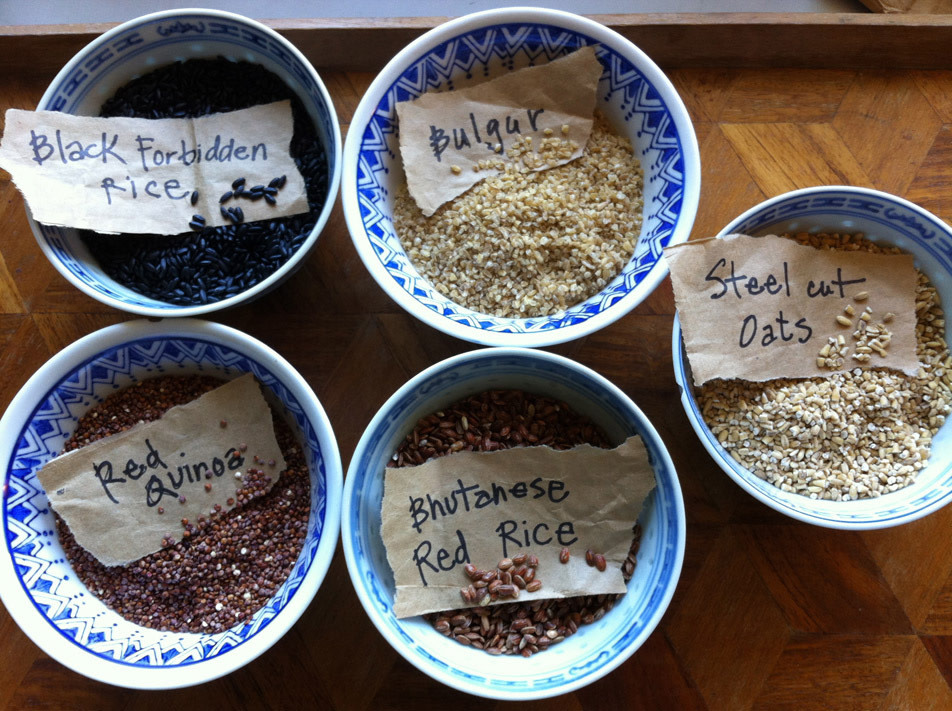Going With the Grain

Image: Kristin Belz
With farmers markets swinging open full-time in coming weeks (see our guide to markets), now is the perfect time to anticipate the question of what we'll be serving up alongside all those gorgeous fresh vegetables and fruits. Because, colorful and varied as they are, veggies and fruits like to snuggle up to something a little different, outside their own food family.
And with economy, ecology and health in mind, the right direction to head for good company is to go for grains. This is not to say we leave good taste (or the excellent choices in local meats and seafood) behind, of course. But we embrace a variety of great tastes, smells and textures when we open up the window on whole grains. It’s easy to expand your repertoire of what might go with that veggie stir-fry or in that cold chopped salad when you realize there’s a great big grain-filled world out there waiting to be discovered.
Herewith, a brief guide to whole grains. We’ll be exploring further in coming weeks as the markets explode with spring and summer harvests.
What is a whole grain? As Bruce Weinstein and Mark Scarbrough point out in their excellent book Grain Mains, calling the healthy grains we all know we're supposed to eat "whole" is really a misnomer. Grains are actually seeds, made up of four parts, or layers, from outer to inner:
- Hull - the tough, and "mostly inedible" outer layer, it's like the shell is to a shrimp.
- Bran - a thin, fibrous layer that seals in moisture and provides flavor and "chew" as it protects the inner parts of the grain.
- Germ - "tiny [and] dark," it's what "powers the seed to reproduce but also provides most of the luxurious fat" (which of course is the "good" fat: polyunsaturated).
- Endosperm - the plump, pale center of the seed: it "offers most of the luxurious, soft texture" and distinctive flavors.
- Amaranth
- Quinoa - red and multi-colored varieties in addition to the usual yellow
- Oats - steel cut, Scottish, rolled (not instant!)
- Barley
- Wheat berries - includes bulgur, whole-grain farro, spelt berries, and kamut
- Rice - brown, red, wild, black forbidden... there are many non-refined varieties




